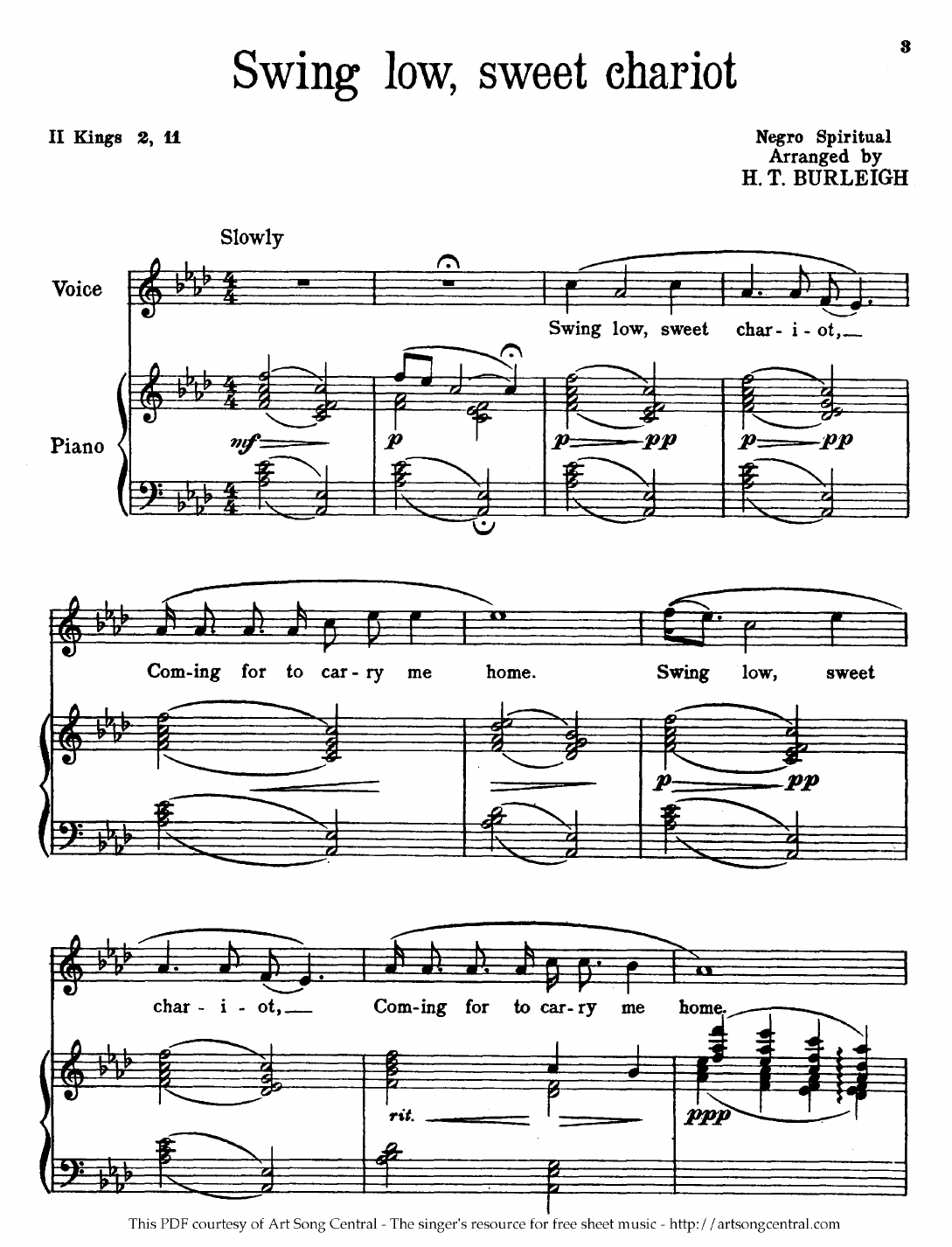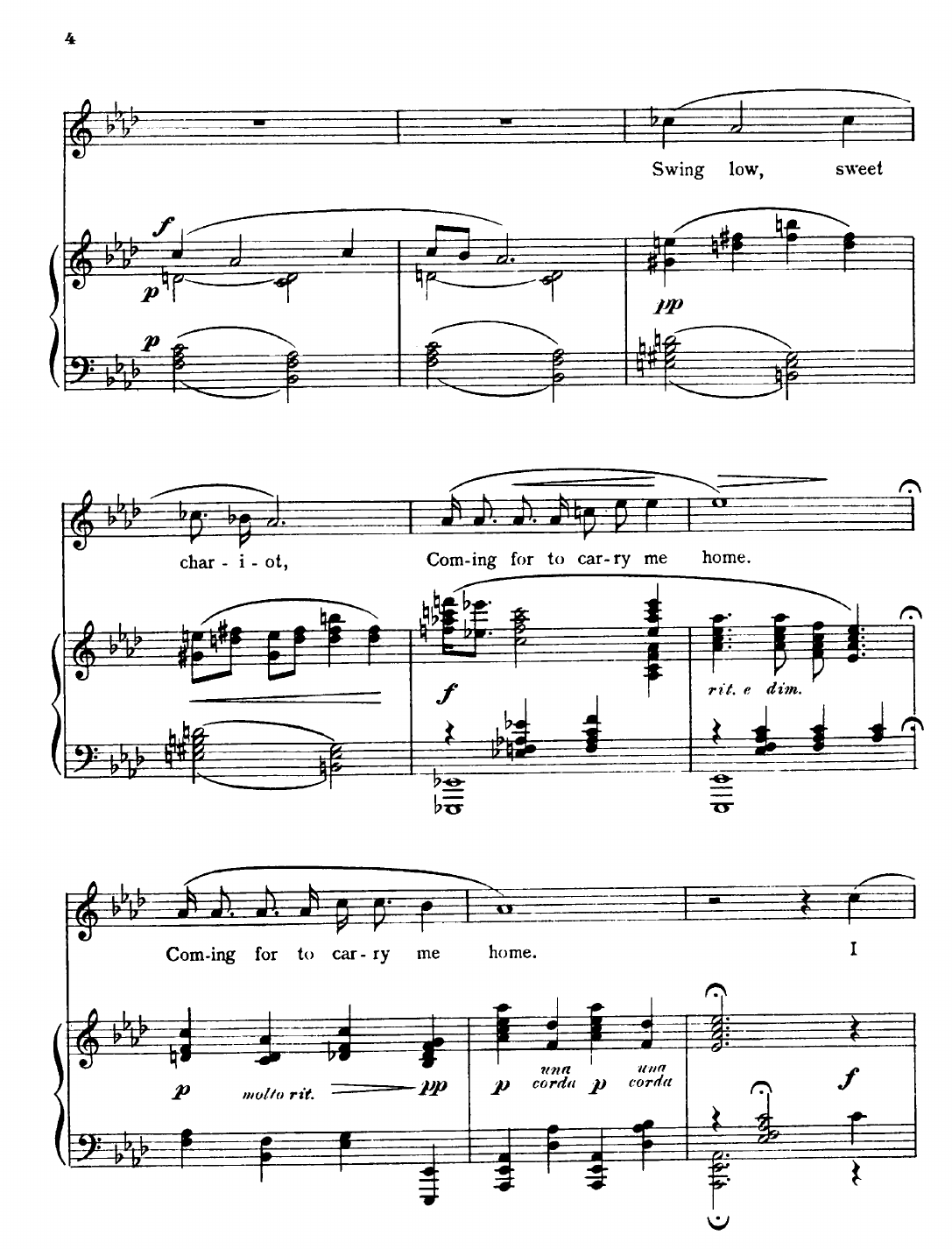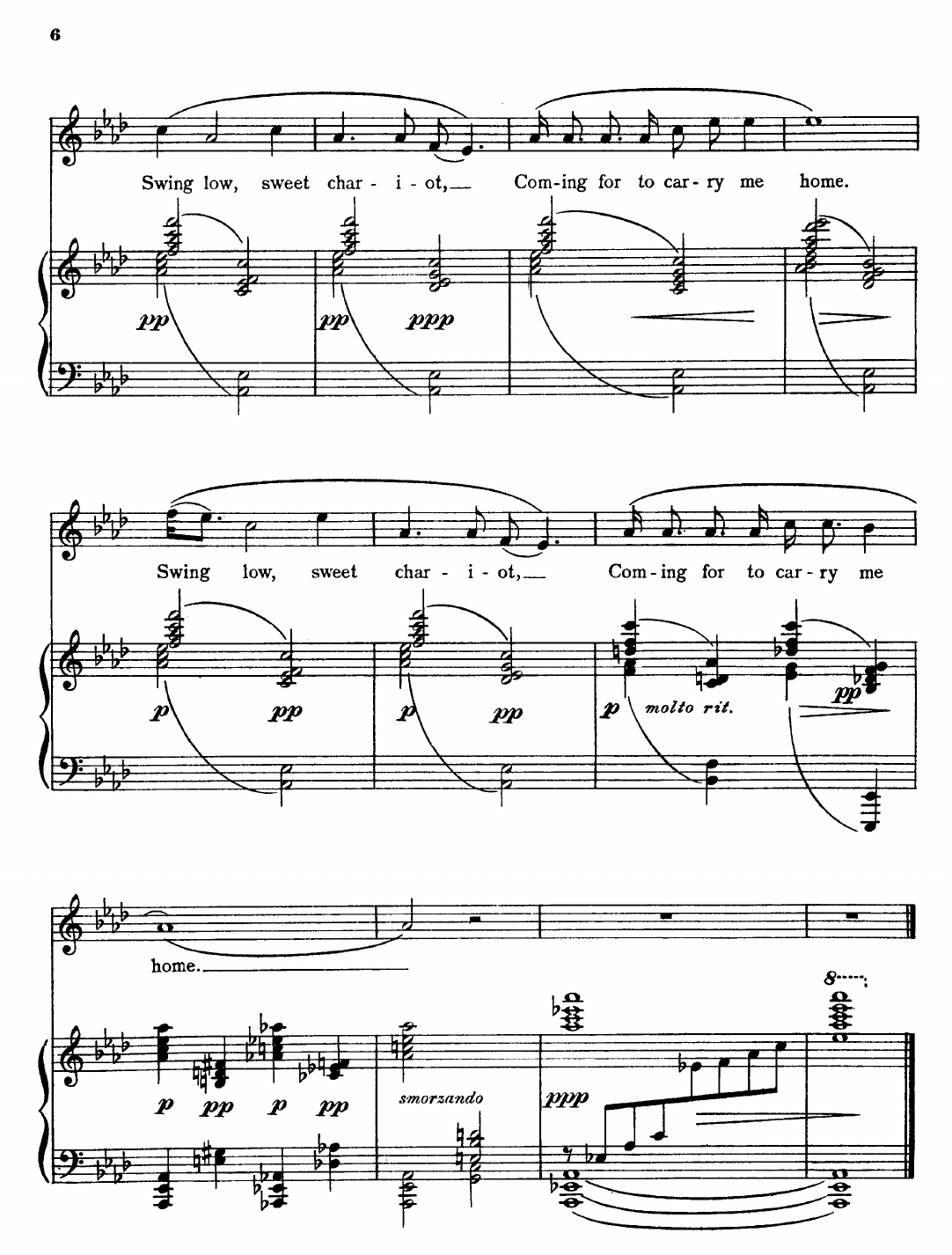
Lesson – Spirituals on the Underground Railroad
Companion Video – “Swing Low, Sweet Chariot”
Suggested Grade Level
Grades 1-6
Objective
Students will learn about the history of the spiritual “Swing Low, Sweet Chariot” and
understand the role that spirituals played in the Underground Railroad. They will learn
about signal songs and map songs. They will explore the Buffalo/Niagara region’s role in the
Underground Railroad.
Suggested Materials
BPO video of “Swing Low, Sweet Chariot”
“Swing Low, Sweet Chariot” music and lyrics (provided)
Optional: video of Follow the Drinking Gourd- https://tinyurl.com/lm3j5dj
New York State Arts Standards
MU:Pr4.2.1a-6a
MU:Re7.1.1a-6a
MU:Cn11.1.1a-6a
New York State Social Studies Standards
Standard 1: History of the United States and New York
Standard 3: Geography
Standard 4: Economics
Standard 5: Civics, Citizenship, and Government
Procedure
1) This lesson focuses on spirituals as a tool for the Underground Railroad, but this form of
song was used long before that time. Introduce students to the spiritual as a song that
served many purposes for the enslaved African people in the 17th-19th centuries. These
songs were used as:
a) protest to slavery
b) a source of motivation and inspiration
c) as an expression of community and values
d) In the 1960s and 70s many spirituals were “updated” with new lyrics to become
freedom songs and used in the Civil Rights Movement.

Lesson – Spirituals on the Underground Railroad (continued)
2) When the Underground Railroad was created to help slaves escape to freedom in the
North, spirituals took on an important role – as coded messages. There were two types
of coded spirituals: “the signal song” and the “map song.” Discuss as a group what the
Underground Railroad looked like and how these spirituals might have played a part.
Was it an actual railroad? What information do students think a “signal song” gave
slaves? How about a “map song”?
a) Signal songs alerted slaves to upcoming events that would help them escape.
b) Map songs created “maps” by giving instructions and landmarks to follow while
traveling on the Underground Railroad
3) Introduce students to the music and lyrics of “Swing Low, Sweet Chariot.” Play the
video of the Buffalo Philharmonic performing the piece.
4) Share some history of this piece with the students:
a) For many years, “Swing Low, Sweet Chariot” was believed to be originally
composed by Brit Willis, a half-Choctaw (Native American) man, who lived on a
plantation in Mississippi. However, recently historians have found evidence that
it was Brit’s slaves who first created the song. When Brit Willis left for the Trail of
Tears — the route taken by Native Americans when the U.S. government
ordered them to relocate to the West — he took his two slaves, Wallace and
Minerva Willis along. Brit Willis rented the slaves out to Spencer Academy for
Choctaw boys in Oklahoma where the couple entertained students by singing
some of their original songs, including “Swing Low, Sweet Chariot.” A minister at
the school was so impressed with the song that somewhere around 1873, he
notated the music and words and sent it to the Jubilee Singers, a choir at Fisk
University in Tennessee.
b) The Jubilee Singers performed the song during their tour of the United States
and Europe and actually made the first recording of the song in 1909. The song
became very popular in the US and abroad and was said to be one of Harriet
Tubman’s favorite spirituals. Harriet escaped slavery, bought a home in Auburn,
NY, and returned to the south fifteen times during her life in order to lead
hundreds of slaves to freedom in the north. Some accounts say that along the
Underground Railroad, slaves would often substitute the name “Harriet” for the
word “chariot” while singing.
5) Sing through the song together. The song is set up as a call and refrain, with every other
phrase containing the words “coming for to carry me home.” In singing with the
students, you may want to sing the calls and have students simply respond with the
refrains.
“Swing low, sweet chariot, comin’ for to carry me home”
6) This song is a “signal song.” Ask students to brainstorm what this song might be
signaling. Coded/signal meaning – “Chariots” refers to the wagons and carriages that
were used to help transport slaves to safe houses or churches. These “Chariot” drivers
were Underground Railroad “conductors.” They would help usher the slaves to safety.
The song served as a message to the slaves that help would be arriving soon. They had

Lesson – Spirituals on the Underground Railroad (continued)
to be alert and ready to leave. “Swing Low, Sweet Chariot” was not only an inspirational
song, it was a sign of hope that real help was on the way.
Extended Learning: Map Songs
Introduce students to the most famous “map song, “Follow the Drinking Gourd.” Each verse
gives instructions on a path to freedom. Share the lyrics of the chorus with students (see
below). Then brainstorm with students how this song might draw a map for slaves who
would hear it. Find a recording of the song here: https://tinyurl.com/lm3j5dj.
Chorus:
When the sun comes back and the first quail calls,
Follow the Drinking Gourd.
For the old man is waiting for to carry you to freedom,
If you follow the Drinking Gourd.
Coded meaning:
“When the sun comes back” means winter and early spring when migratory quails are
beginning to return from the North. The Drinking Gourd represents the Big Dipper. This
verse tells slaves to leave in the winter and walk towards the Big Dipper or Drinking Gourd
(walk North). Eventually they will meet a guide (the “old man”) who will escort them for the
remainder of the trip.
Extended Learning: Underground Railroad in WNY
Several escape routes on the Underground Railroad ended in the Buffalo/Niagara region,
where slaves crossed over the Niagara River into Canada. Three of the most famous points
in our region are:
Michigan Street Baptist Church, Buffalo, NY
Foot of West Ferry St., Buffalo, NY
Tryon’s Folly, Lewiston, NY
Ask students to do some research on these locations in the Buffalo/Niagara region where
the Underground Railroad helped escaped slaves find freedom. Give students an
opportunity to share their research.




